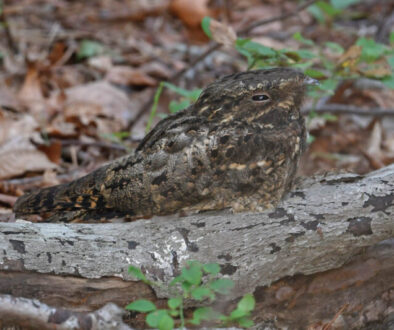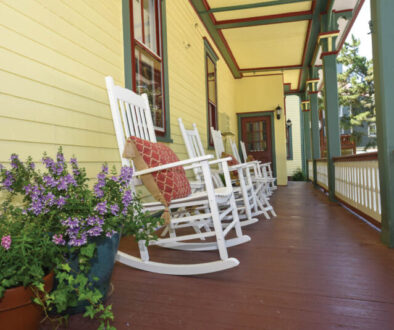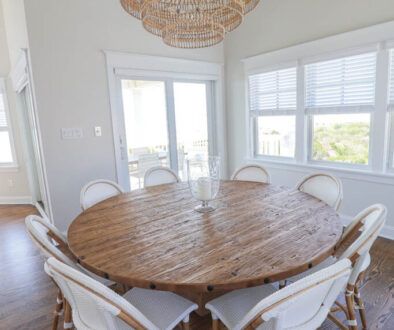A Painter Painting Paintings
He’s seen the world, but Stan Sperlak prefers the view from a country barn in South Jersey. Now the artist is sharing his homestead with the rest of us.
Photos courtesy ofSTAN SPERLAK & KATE CHADWICK

It’s not precise to call Stan Sperlak an artist. Better to call him a landscape architect-turned-landscape painter-turned-teacher, a musician, poet, historian, and curator of fine and found art.
Recently, the multi-hyphenate added filmmaker to the list, with the documentary 300 Years in the Middle, which chronicles the history of Middle Township from the 1720s on.
But asked to describe himself, Sperlak says simply, “I’m a painter painting paintings.”
And while he’s traveled the world, Sperlak mostly paints what’s outside his door: the marshes and woodlands, earth, and sky of Cape May County. He has a rare view of it all from his home base, a swath of countryside punctuated by woodland galleries, statuary, and unexpected art, known as Sperlak Gallery & Sculpture Gardens.
Root and Branch

Growing up in a military family (his dad was a Navy veteran and Coast Guard lifer), Sperlak lived in Colorado, Hawaii, New York, and Minnesota before settling in New Jersey. The island flora of Oahu “imprinted” him with a love of gardening, and the perennial new kid in town also took refuge in drawing.
“Crayons were often my best friend,” he says, “because I didn’t know anybody else in the class.” He especially loved Cray-Pas oil pastels, which are fingerpaints. “For one thing, I liked to get my fingers dirty. For another, it’s easier to wash your hands than to wash a whole bunch of brushes.”
These two elements—nature and art—would intertwine and determine his life’s course.
Growing up in Rio Grande, like a lot of shore kids Sperlak was a sodbuster, working on a lawn crew. Eventually, he became an accomplished landscape designer and contractor, running his own garden center in Cape May Court House. He was part of what he calls the “anti-landscaping” movement in Cape May, introducing formal parterre gardens at bed-and-breakfast inns. But his attempts at client renderings “were really pathetic. I wasn’t good at conceptual drawing at all. That takes training.”
So midstream and mid-career, Sperlak made a bold decision: to enroll at the Pennsylvania Academy of Fine Arts in Philadelphia and “learn to draw really well.” He trained under noted artists like Al Gury, “an angel of a teacher and a compassionate soul” who saw talent in the unschooled painter. Closer to home, he studied with Pat Vanaman Witt, founder of the Barn Studio of Art in Millville. Witt drilled him in the plein-air technique, painting from nature, often on the banks of the Maurice River. By the late 1990s, Sperlak’s work was being exhibited in galleries up and down the east coast.
His second act was underway.
For Arts’ Sake

Sperlak became known for stark, richly hued landscapes, usually in pastel. “Pastels can be very inexact, but they suggest things by their inaccuracy—they’re not precision instruments unless you use the edges of them, which I do too,” he says. “Mostly it’s the primal connection of having the art medium right in your hand, with your fingers microns away from the surface.”
He describes his landscapes as “extremely abstracted, so there’s some simplicity. Cape May County lends itself to a certain amount of abstraction because it doesn’t have mountains or really tall forest trees or waterfalls, it doesn’t have windmills. There’s a lot of subtleness to the area.”
He has been challenged by viewers who mistake simplicity for too simple. “Every now and then I get a comment from someone who says, ‘A lot of your paintings are very similar: big skies, low horizons, flat horizons.’ And I say, ‘Yeah, isn’t that great? I love that.’”
His former teacher Pat Witt, now 95 and still working, agrees. “South Jersey is three-quarters sky and one-quarter earth. It’s a beautiful composition—I just love the wonderment of it,” she says. “Stan is very accomplished in pastel and watercolor, especially the clouds and the sunsets and sunrises. He’s a great painter.”

Unlike some shore-based artists, Sperlak is rarely tempted by nautical themes. “How many times can you paint the lighthouse or the lifeguard boat? It’s not a bad motif, it’s iconic, but it’s sometimes overdone. I painted the lighthouse and I’ll paint the lighthouse again. But I don’t make my living from the lighthouse.”
Two Sperlak landscapes traveled to Uzbekistan when New Jerseyan George A. Krol served as ambassador under President Barack Obama. The U.S. State Department’s Art in Embassies program describes Sperlak’s work as “colorful personal journeys through beautiful South Jersey, Delaware, and Maryland. His intensely pigmented work is the result of handmade soft pastels on rough and smooth papers and boards…. By virtue of their mineral makeup, dozens of minute facets refract light to the viewers’ eyes and create that special look and depth that pastels can bring.”
By late 2019, firmly established in what he calls “the ‘sport’ of pastel,” Sperlak was ready to opt out of gallery representation.
“Galleries are always looking for something different, new, bigger, better—and there’s nothing wrong with that,” he says. “But I didn’t want to put myself against those kinds of goals, deadlines, and performance quotas. I wanted to paint what I wanted when I wanted to paint it. I didn’t need a middleman.”
That’s when the barn at Crow Creek became his studio, schoolroom, and showcase.
Down on the Farm

In the late 1990s, Sperlak had acquired the farm, 37 untamed rural acres along Delsea Drive in Goshen.
At first, the land was less than hospitable—a jungle of overgrown weeds, dumped leaves, barbed wire, and phragmites edged by marshland that swarmed with insects. “It was like an Alfred Hitchcock movie, like Mars Attacks,” Sperlak recalls. “In the summer, you couldn’t get out of your car for the flies.”
So, he enlisted the “brute force” of the landscaping team from his garden center and gave the place a makeover. “I planted probably 500 native plants that were left over at the end of the year. I put in a dozen more bayberry, a dozen more red cedars, 25 winterberry. The sumac could grow here, the holly trees could grow there, and I would embellish the area. So, the property got really nice.”
He trimmed and pruned and groomed the outgrowth and cleared some fields. He opened up wind tunnels for “natural air conditioning.” He planted crabapple trees and pumpkin patches, soybeans and sunflowers, and let it all go to the birds, deer, and rabbits who visited the farm.

In 2003, Sperlak established the Goshen School of Art to teach the plein-air technique he had learned from Pat Witt. And gradually, among the reeds and brush and trees, he began to add the sculpture that would transform his farm-out-on-the-marsh into a walkable outdoor gallery.
Much of it was improvised from “old barrels, big, giant steel balls, buoys from the shipyards,” according to Sperlak. “If somebody had some scrap metal, I’d say, ‘Look, can I have that?’ and they’d say, ‘What the hell you want to do with that?’”
He points at a field adjoining the barn, to a tangle of corrugated iron now called Requiem for a Reprise. “It’s just a pile of metal, dead and smashed and run over by a tractor,” he says with pleasure. “We took it as junk and gave it a whole new life.”
Other curiosities include Naked Calvert, a headless garden statue salvaged from Sperlak’s nursery that was placed on a stone and brick pedestal and topped with a ceramic skull.
Then there’s Thrust, a sculpture made of two cast-iron forklift blades that balance a 16-pound metal shotput. The installation also serves as a sundial.
And the Narcissus Bridge, set on a mudflat and inspired by bridges Sperlak has seen in Japan (he’s taught art in both Japan and China as well as Italy, Iceland, France, Australia, and New Zealand).
Sperlak sees art in carefully balanced stone slabs, brilliantly painted bamboo, and stalks of steel rebar that, staked into the ground, almost look like waving fronds, or the ribs of a fan. His motto is low-cost, no-cost: “How cool can I make something that didn’t cost anything?”
For ease of viewing, he created lookouts and docks along the marsh where his students could hang out and be inspired. “Having workshops here, people would go, ‘Wow, your property is a haven, it’s a sanctuary. you could sell tickets to this place. People would come.’”
Creating Sanctuary

At first, he waved away the suggestion. “I didn’t want people to come here. I liked to keep it to myself.”
But as he added more art, he recognized the appeal for visitors and decided to put out the welcome mat. “And it worked right away. I didn’t really have as much art as I probably should have to call it a true sculpture garden; it was more of a well-maintained property with some interesting things on it. But people started coming.”
His collection continues to grow. In the two years of the pandemic, Sperlak introduced almost three dozen new pieces to the grounds. “I’ve populated the property well,” he says. “Some of the sculptures will degrade or fall over, so I hope that over time, I’ll interest other sculptors in a long-term five- to 10-year loan of a good piece.”
He also hosts a series of regular events including concerts, nature walks, bird walks, art workshops and lectures.

Local musician Marnie Bevan Lengle calls the farm “the ultimate playground for creativity,” and “a respite” in the COVID years. In 2021, she and 18 other local musicians convened there to record a CD, Songs from the Barn, a blend of Americana, folk, blues, jazz, and classical tunes, with proceeds earmarked for musicians who couldn’t make a living due to COVID shutdowns.
Art events include the recent “Pan Gogh” party, where participants painted old metal baking pans with images in Van Gogh style and hung them from trees in the woods. In the spring, Sperlak hosted a “Blue and Yellow Fundraiser” to benefit the people of Ukraine.
He appreciates the sanctuary his gardens provide—a retreat from unsettled times and the barrage of bad news.
“Some people think the world’s coming to an end right now, but there’s always been some event that’s nice to get away from: the first invasion of Iraq, the war in Afghanistan, the World Trade towers, the space shuttle… You care about the world, but artists have always had a way to put things in front of other people that helps them adjust and cope.
“When people come to my sculpture gardens, after about 45 minutes I’ll go out and greet them and say, ‘I’ve got a question for you. Have you thought about CNN, Fox, or The New York Times while you’ve been here?” Thankfully, the answer is usually no.
In the words of Pat Witt, the landscape architect-turned-painter-turned-teacher is “a Renaissance man, interested in all aspects of the humanities—astrology, astronomy, meteorology. But most of all, he is a painter of his environment. That is very important to artists.”
Bevan Lengle calls the farm “a best-kept local secret—such a unique location on the marsh that at the same time is a farm. The beauty of what makes Cape May County so special is right at your fingertips. Stan built that place, and now he is generous enough to open it up to the world.” ■
The Sperlak Gallery & Sculpture Gardens, located on 521 Route 47 North (Delsea Drive) in Goshen, offers more than three miles of trails on 24 acres of fields and forests. An additional 13 acres of salt marsh back up to the 15,000-acre Dennis Creek Wildlife Management Area. The property is open to the public every Saturday and Sunday from 10am to 4pm. Visiting the art gallery is free. Guests can take self-guided tours of the gardens with a $10 suggested donation per adult. Children are admitted free.



